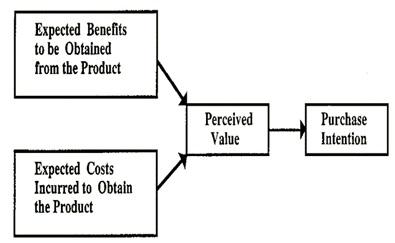- Business Concepts ›
- Marketing and Strategy ›
- Purchase Intention
Purchase Intention - Definition, Importance, Factors & Example
This article covers meaning & overview of Purchase Intention from marketing perspective.
Purchase Intention Definition
Purchase intention is the willingness of a customer to buy a certain product or a certain service. Purchase intention is a dependent variable that depends on several external and internal factors. Purchase intentions are a measure of the respondent’s attitude towards purchasing a product or availing a service.
Purchase intentions are a very important metric in marketing. In fact, marketing based on intentions or intent marketing is about marketing goods & items based on the intentions of the consumers or the consumer’s intent to accept, buy or use a particular product or service which may or may not have been clearly mentioned by the company or brand. Purchase intentions as a measurement are effective in designing marketing activities or promotions. The intent of a customer can make it very easy to exactly iterate what kind of content should be displayed in an advertisement. The intentions can reflect information about the knowledge levels of the consumer’s mind. And on the basis of this measurement the design of marketing activities can be formed. Purchase intentions of a customer base can be analyzed to make an integrated map of how to go about an advertising campaign.
Importance of Purchase Intention
Marketing based on purchase intentions as a measurement leads to the increase in the return on investment in terms of marketing activities. Having an idea or an exact measure of intentions of a customer can help design the marketing activities in ways that they reach the target audience and product the desired results that is greater customer involvement and higher return on investment. This happens because of the absence of the need for the creation of awareness about a product or service rendered by a brand in the consumer’s mind before promoting it. Purchase intentions as a measurement may be predicted or recorded based on the behavioural data or the interaction database, captured explicitly when the customer tries to purchase a product or service and the transaction gets aborted or the purchase doesn’t happen.
Some sources of purchase intention measurement can come from search marketing more popularly known as search engine marketing and search engine optimization.
Several other sources of intent data might be site data, off-site web activity or point if sale or customer relationship managers. The data obtained from social networks known as social data may also be of a lot of help. Content consumption data or patterns are very useful in terms that the intent data obtained from them act as digital footprint because these are mapped through particular key head terms on a search engine. These come from interactions, when consumers visit a website or engage on social media platforms and they give us the brief idea or measurement of the customer’s current and future purchase intentions. These intent measurements individually tell us a lot about how the design of engagement activities can be made effective so that the platforms can become more interactive and fruitful.
5 Factors that influence Purchase Intention
Some of the factors are as follows:
1. Stimulus/Trigger
The cue that triggers a buyer towards considering a product or a brand to be included in their consideration set. This might be the attributes of a product or simply its packaging
2. Outcome Expectation
The outcome expected out of the use of a product or a service
3. Aspirational Value
The product might satiate some aspirations of a buyer. For ex. A luxury car
4. Recommendation
Recommendation by a trust worthy or reliable source
5. Emotional Association
Being emotionally associated with a product or a brand owing to the brand’s perceived personality
Other factors can be perception about the product, associated risks and costs.

Example of Purchase Intention
Let’s take the example of Vodafone, and see how intent marketing or marketing based on purchase intentions helps them to figure out how they should advertise about their plans. If a subscriber uses any Vodafone services, he/she has to have a plan to access mobile data and call and messaging services. Let’s say the pack is Rs.199/- pack which provides 1.5 GB data per day and unlimited calling and 100 messages per day for 28 days. This recharge can be done in two ways, one normal recharge or if you have balance, the recharge amount is deducted from your Vodafone account. The point where your account doesn’t have enough balance it would lead to a failed transaction. This tells the company the exact time as to when a customer takes this recharge, so that they can measure the intentions of the customer to continue with the brand or to leave it. We see that this helps them to figure out when and how they should message a customer or intimate them about their recharge. This also helps them to figure out how they should advertise their plans and to whom they should advertise related recharge plans.
Hence, this concludes the definition of Purchase Intention along with its overview.
This article has been researched & authored by the Business Concepts Team which comprises of MBA students, management professionals, and industry experts. It has been reviewed & published by the MBA Skool Team. The content on MBA Skool has been created for educational & academic purpose only.
Browse the definition and meaning of more similar terms. The Management Dictionary covers over 1800 business concepts from 5 categories.
Continue Reading:
What is MBA Skool?About Us
MBA Skool is a Knowledge Resource for Management Students, Aspirants & Professionals.
Business Courses
Quizzes & Skills
Quizzes test your expertise in business and Skill tests evaluate your management traits
Related Content
All Business Sections
Write for Us